2.2 million euros for Brenda Schulman
Director at the Max Planck Institute of Biochemistry receives ERC Advanced Grant for her current research
July 2018

© Max-Planck-Institut für Biochemie
Prof. Schulman‘s department takes an interdisciplinary approach, combining cell biology, biochemistry, genetics, chemistry, structural biology and biophysics to understand how protein functions are switched on and off by ubiquitin-like proteins and ubiquitin
Since 2017 Brenda Schulman, Ph.D., heads the department “Molecular Machines and Signaling” at the Max Planck Institute of Biochemistry in Martinsried near Munich. She has received numerous awards, including the United States Presidential Early Career Award for Scientists and Engineers. She is a member of the American Academy of Arts and Sciences and the National Academy of Sciences, and was recently elected to the European Molecular Biology Organization. Now the director at the Max Planck Institute of Biochemistry in Martinsried received an ERC Advanced Grant from the European Research Council (ERC). Over a period of five years, Schulman will receive around 2.2 million euros for her research.
Schulman did her Bachelor’s degree in Biology at the Johns Hopkins University, Baltimore, MD, USA. After her Ph.D. in 1996 at M.I.T. in Cambridge, MA, USA, she spent five years as a postdoc, at Masschusetts General Hospital Boston, MA, USA and at the Memorial Sloan-Kettering Cancer Center, New York, NY, USA. In 2001, Schulman moved to the St. Jude Children’s Research Hospital in Memphis, TN, USA. There she worked from 2005 and 2017 as Howard Hughes Medical Institute Investigator before moving to Munich.
Together with her team, Schulman investigates a predominant mechanism regulating cellular proteins. Proteins are the workhorses of cells. Different types of work are done by different types of proteins, ranging from enzymes that digest food to components of muscle. In order for proteins to work properly, they need to be switched on when needed and off when the job is done. A major way that proteins are switched off is by marking them with another small protein called “ubiquitin”. Just like there are many different proteins, there are also hundreds of different tiny molecular machines in cells, called E3 ligases, which execute the tagging with ubiquitin. Therefore, it is essential that E3 ligases are themselves turned on and off at the right place and at the right time in cells.

Brenda Schulman, Ph.D., Director at the Max Planck Institute of Biochemistry
© Max-Planck-Institut für Biochemie
The “on-switch” for about one-third of all E3 ligases is a small protein that looks like ubiquitin, but is called NEDD8. “Although we know the components of many E3 ligases, we don’t know how NEDD8 causes them to assemble from all their parts at the right time and place in a cell, or how NEDD8 causes them to be able to transfer ubiquitin to the proteins that need to be tagged”, says Schulman. Using a multidisciplinary approach, the researchers want to understand everything NEDD8 does to activate E3 ligases, the mode of operation of the activated ubiquitin ligase machineries, and how NEDD8 causes other molecular machines to turn off the ubiquitin-marked proteins.
“We know that without NEDD8, much of the whole machinery of ubiquitination comes to a standstill. Accordingly, it has to perform essential tasks alongside other components“, says Schulman. “Ultimately we want to understand this in such detail like in a 3D film. We want to visualize the single steps in three dimensions by using electron microscopic images. We then will put the 3D snapshots in order to understand the dynamic step-by step ways that NEDD8 turns on specific E3 ligases, and then how the activated E3 ligases then turn off specific proteins that need to be shut down”, summarizes Schulman.
Ultimately, Schulman expects that finding out the numerous ways NEDD8 activates hundreds of distinct but related E3 ligase machineries will explain an extraordinary number of different biological processes NEDD8 and E3 ligases together control, like immunity, proliferation of cancer cells, infections by viruses, when we wake and sleep, and even the growth of plants.



